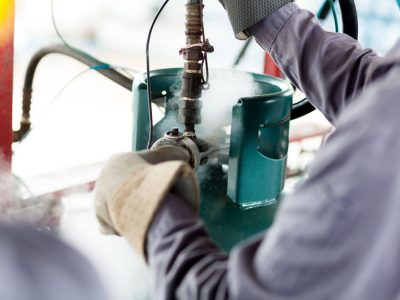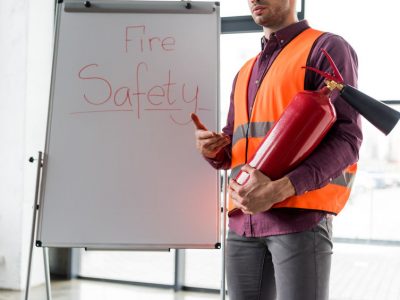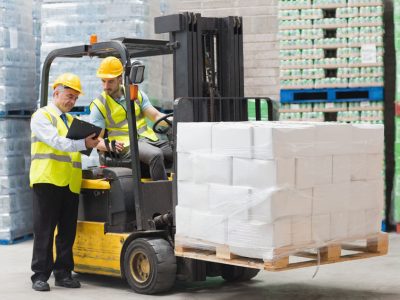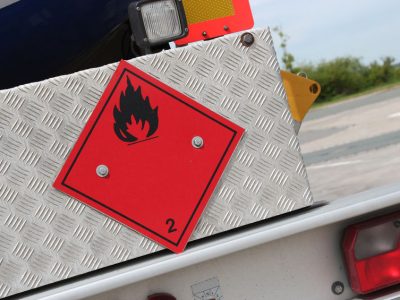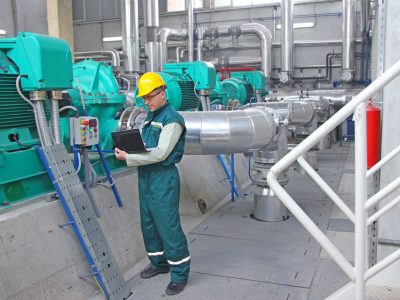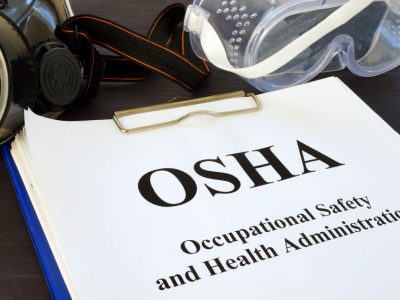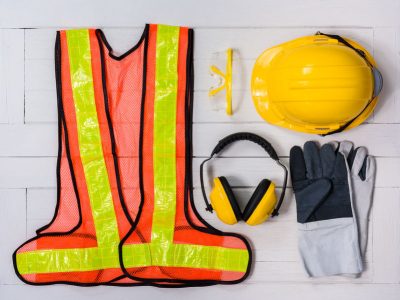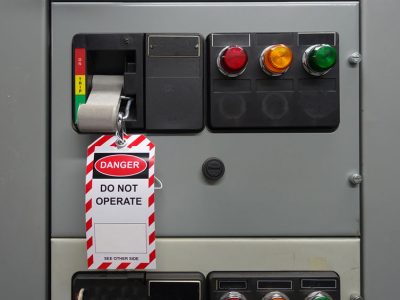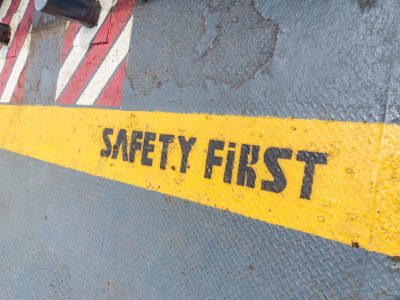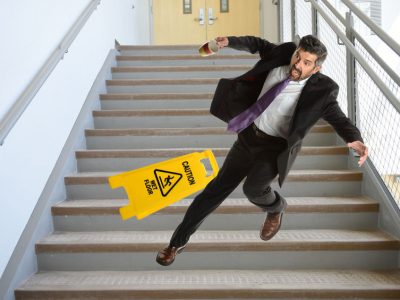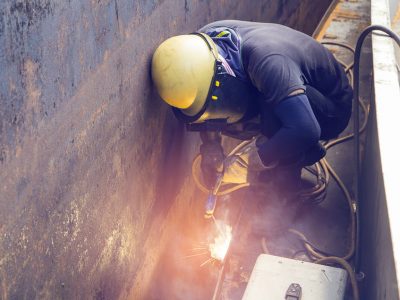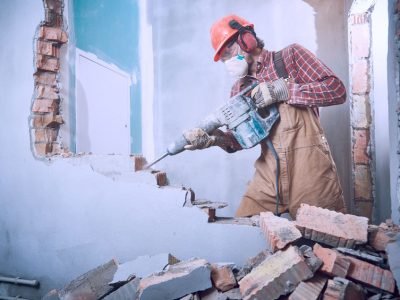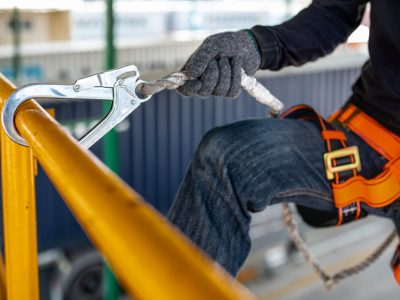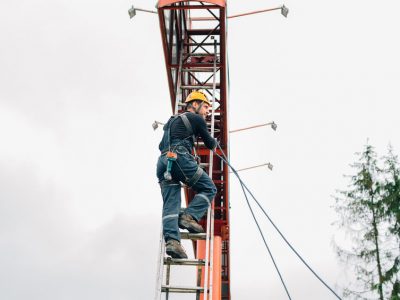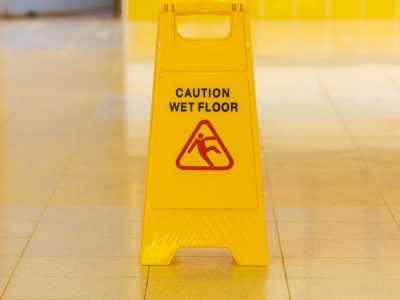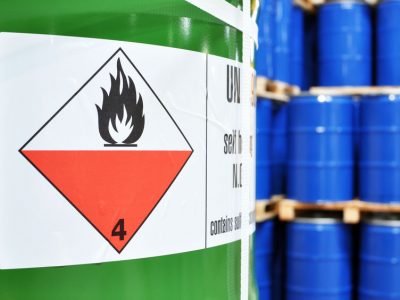Safety Training For Employees
$1,399.00
Description
Active Shooter On-Site: What Every Employee Should Do
When it comes to workplace shootings, there are measures you can take to not only limit the damage but also to save precious lives both before and during these traumatic incidents. Because most incidents are over within minutes, you must be prepared to react to the situation with speed. During this session, we’ll talk about how you, as an employee, should react to and prepare for an active shooter in your workplace.
Arc Flash Safety
This online arc flash safety training course will teach employees the hazards and risks of working on or near energized electrical equipment. It will also discuss the procedures for preventing an arc flash accident and how employees can protect themselves from the hazards of an arc flash while at work.
Avoiding Back Injuries
The main objective of this session is to help you prevent back injuries. By the time the session is over, you should be able to identify causes of back injuries; prevent back injuries; use proper lifting, load carrying, and unloading techniques to help protect your back; and think smart about your back and the importance of keeping it healthy.
Avoiding Exposure to Bloodborne Pathogens
This session discusses how you might be exposed to bloodborne pathogens (BBP) and infectious diseases, how you can protect yourself from exposure, and how to clean up and properly dispose of blood or bodily fluids. Employees most likely to be exposed include first-aid responders, janitorial and maintenance personnel, and workers assigned to clean up after an industrial accident. Even if your job does not normally expose you to blood or bodily fluids, this session is helpful to raise your awareness of bloodborne pathogens, to understand why you should not come in contact with them, and to understand that it is important to report spills of blood or bodily fluids so that they can be cleaned up safely.
Basic First Aid for Medical Emergencies
The main purpose of this session is to familiarize you with basic first-aid procedures. By the time this session is over, you will be able to recognize the benefits of obtaining first-aid and CPR certification; identify proper procedures for a variety of medical emergencies; assist in administering first aid when a coworker is injured; and do no further harm.
Battery Safety
The main objective of this session is to make sure you work safely with batteries on the job. By the time the session is over, you will be able to identify battery hazards; understand how batteries work; charge batteries safely; assist in maintaining batteries properly; select appropriate personal protective equipment (PPE) for battery maintenance; and follow proper emergency procedures.
Bloodborne Pathogens—General
This online bloodborne pathogen safety training course will teach employees to identify bloodborne pathogens (BBPs) that might be present in the workplace and understand how certain diseases are transmitted through blood. This course will teach employees to determine risk of exposure to bloodborne pathogens in the workplace and how to protect themselves from exposure through prevention and by following certain procedures if exposed and how to respond appropriately if exposed to bloodborne pathogens. It is also important to understand employee rights to medical evaluations.
Compressed Gases
Compressed gas cylinders pose very serious risks when not handled properly. This online training course discusses how to work safely with compressed gas systems and cylinders that are used in the workplace and how to protect against the hazards they pose. At the end of this training session, trainees will be able to identify compressed gases by the labels; safely transport, handle, and store compressed gas cylinders; safely use cylinders, regulators, and gauges; and know the specific hazards of some common compressed gases.
Crane Rigging Safety Training
This online crane rigging safety training course teaches employees the safe way to handle crane rigging and all the hazards associated with using cranes while at work. Cranes are used at many workplaces, across all major industries, to lift and move materials. Crane operators are generally trained and often certified in safe crane operations and inspection. However, many accidents involving cranes are caused by failures of crane rigging and rigging hardware.
Defensive Driving Training for Noncommercial Motorists
Motor vehicle accidents are the most common form of death of all workplace fatalities, and vehicle accidents, injuries, and fatalities outside of work are also on the rise due to all different kinds of distracted driving and other hazards. Whether you drive on the job or just commute to work, it’s important that you stay on your toes and drive defensively to keep yourself—and other drivers and pedestrians—safe. During this training session, we’re going to talk about some techniques that will help you avoid driving accidents and injuries.
Disaster Planning—What Employees Need to Know
Fires are the most common type of workplace emergency. The National Fire Protection Association reports that a fire department somewhere in America responds to a fire every 16 seconds. The Bureau of Labor Statistics estimates that fires cause as many as 10,000 employee injuries and 200 employee deaths every year. In addition, the U.S. Fire Administration says that losses from industrial fires cost U.S. businesses over $4 billion a year in property losses and more than $8 billion in business interruption costs. Explosions resulting from fires, bombs, or other causes can claim many lives, leave many more badly injured, and destroy property. Natural disasters such as earthquakes and tornadoes can strike with little or no warning. Hurricanes and floods may be forecast, but effective emergency action in these situations may nevertheless be required. Toxic chemical releases can require emergency response within the workplace and in the surrounding community. Workplace violence can erupt at any time in any department. We must be prepared to respond quickly and appropriately in these dangerous and sometimes life-threatening situations. Since the Oklahoma bombing, the events of September 11, 2001, and subsequent terrorist activity around the world, it has become clear to all Americans that we must be prepared to face the possibility of terrorist attacks in the workplace at any time.
Electrical Safety—Unqualified Worker
This training session will discuss the hazards of electricity and how to prevent exposure to electrical hazards. By the end of the training session, you will be able to understand the hazards of electricity, identify and avoid common electrical hazards, and follow safe work practices around electrical equipment.
Emergency Action & Fire Prevention
This online safety training course will teach employees to understand workplace hazards that lead to an emergency and how to respond quickly and efficiently to an emergency situation. Also covered in this training course is how to evacuate an area in an emergency, protect others from fire and other hazards, prevent fires, and respond to fires and spills while at work.
Eye Protection
During this session, we’ll talk about what eyewear you need to wear depending on the hazards you deal with on the job, and we’ll show you exactly how to use and maintain it.
Fire Extinguishers Safe Use & Handling
This online safety training course will teach employees about what causes a fire, what fire extinguishers do, how to use an extinguisher, and different fire suppressant materials that can be used in case of a fire emergency.
Forklift & Pedestrian Safety
Many workers who work in or walk through areas where forklifts operate are at risk of serious injury from contact with a forklift. There are simple, safe practices and precautions that pedestrians can take to avoid direct contact and prevent injury. This course provides information for workers and others who walk in areas where forklifts operate about the hazards of forklifts and safe practices to prevent contact incidents and injuries. By the end of the training session, you will be able to identify the hazards of working around forklifts, recognize the hazardous conditions and risk factors that contribute to forklift/pedestrian incidents, describe worksite safety controls to protect pedestrians from contact with forklifts, apply safe work practices and precautions while working or walking near forklifts to prevent injury, and report near misses, unsafe conditions, and injuries.
Forklift Operator Safety
This online forklift safety training course will help teach forklift operators the characteristics of a forklift, including differences from driving a car, controls and instruments, motor operation, including steering and other instructions, warnings, and precautions. Reckless driving presents a high risk with these heavy, delicately balanced vehicles. An improperly loaded or operated forklift can tip over, fall off a loading dock, drop a load, or collide with an object or person. That’s why OSHA’s regulation on powered industrial trucks (29 CFR 1910.178) includes more than just requirements for the equipment. It also requires that the trucks be operated only by trained, authorized drivers. Even the best-trained drivers, however, may get careless. Operators need reminders of forklift safety basics so they don’t put themselves—or anyone else—at risk.
Good Housekeeping
The main objective of this session is to emphasize the importance of good housekeeping and explain what it really involves. By the time this session is over, you should be able to, recognize the importance of good housekeeping, understand housekeeping responsibilities, develop good housekeeping habits, identify and eliminate housekeeping hazards, and help prevent workplace fires and accidents.
Hazard Communication & GHS—What Employees Need to Know
Hazardous chemicals are found in many workplaces, and every day millions of workers face potential exposure. Therefore, it is important to know what chemicals are in your workplace, what hazards they present, and how to limit exposure to those chemicals.
The Occupational Safety and Health Administration’s (OSHA) Hazard Communication (HazCom) Standard requires that employees be informed of the hazards associated with the chemicals in their workplace and how to protect themselves from those hazards. This course describes how that information is conveyed to employees.
By the end of the training you will be able to explain the purpose of the HazCom standard; recognize the risks posed by hazardous chemicals in your workplace; explain the purpose and content of safety data sheets (SDSs) and how to access that information; interpret the information on chemical labels; and identify and apply appropriate measures to protect yourself from the chemical hazards in your workplace and respond to emergencies.
Hazard Communication Refresher
The main objective of this session is to make sure you identify material hazards and take proper precautions to protect your health and safety whenever you work with or around hazardous materials. By the time the session is over, you will be able to understand the purpose and requirement of Occupational Safety and Health Administration’s (OSHA) Hazard Communication standard; identify material hazards and safe work practices using labels and safety data sheets (SDSs); understand the effects and symptoms of exposures and proper first aid; use appropriate personal protective equipment (PPE), to protect against specific hazards; and respond quickly and effectively to spills.
Hazardous Materials Transportation
This training session will teach you to recognize and identify hazardous materials; understand hazardous material (hazmat) container markings, labels, and placards; load and unload hazardous materials safely; use protective procedures and equipment; avoid accidents with hazardous materials; respond to an emergency; and recognize and respond to security threats.
Hexavalent Chromium Safety
By the end of the training session, you will be able to identify the characteristics and health hazards of hexavalent chromium, and work activities that may increase the risk of exposure to hexavalent chromium, implement control measures that limit exposure to hexavalent chromium, understand atmospheric monitoring medical surveillance procedures, and wear appropriate personal protective equipment.
Home Safety
The main objective of this session is to help you ensure that your home is safe. By the time the session is over, you will be able to understand the importance of home safety; identify hazards in your home; eliminate or minimize them; and keep your home and your family safe and secure.
How to Prevent & Respond to Bullying
This session helps trainees understand why workplace bullying is a problem, how to recognize it, what motivates bullying behavior, common characteristics of bullies, steps that can help prevent bullying at work, and what to do if the employee is bullied or witnesses bullying.
Hydrogen Sulfide Safety
The main objective of this session is to help you understand the hazards of working with hydrogen sulfide and the preventive measures you can take to protect yourself and your coworkers.
Industrial Ergonomics Training
This online safety training course for industrial workers will look at some of the basic principles of ergonomics in order to use a commonsense approach to working safely. In particular, the information presented here will focus on musculoskeletal disorders (MSDs) and how ergonomics helps prevent them while at work.
Introduction to OSHA & the General Duty Clause
The main objective of this session is to familiarize you with how the Occupational Safety and Health Administration (OSHA) and the General Duty Clause affect your job and our workplace. By the time the session is over, you will be able to understand the purpose of OSHA; identify OSHA’s strategies for improving workplace safety; recognize the impact of the General Duty Clause; and know your OSHA rights and responsibilities.
Job Hazard Analysis
The main objective of this session is to make you more familiar with job hazard analysis. By the time this session is over, you will be able to identify the purpose of job hazard analysis (JHA); recognize the benefits of JHA; understand the JHA process; and analyze jobs effectively to detect and correct hazards.
Ladder Safety
Ladder accidents, injuries, and even fatalities are one of the most common forms of accidents that happen on the job. But there is a lot you can do to avoid becoming one of those accident statistics—and it starts with using the information you will be provided with during this training session.
Lockout/Tagout Training for Authorized Employees
Lockout/tagout training can save lives. Stories about employees crushed to death when heavy machinery starts up without warning are all too common. It is essential for the training in the isolation and control of hazardous energy (aka lockout/tagout) to be effective. This online lockout/tagout safety training course teaches employees to perform the responsibilities of an “authorized person.” Employees will be able to recognize hazardous energy sources, understand responsibilities to other employees, and control hazardous energy with lockout/tagout procedures.
Machine Guarding
Machinery is a common part of many jobs, but it can cause amputations, fractures, and other severe injuries if you don’t know how to use it safely. This course provides information for workers who use machinery on the job about machinery hazards, the importance of machine guarding, and safe work practices when using machinery. By the end of this training session, you will be able to identify the hazards of working with machinery and the most hazardous areas of a machine, be familiar with the types of machine safeguards you may encounter and how they work, and operate machines with guards safely.
Metalworking Fluids
The main objective of this session is to learn the hazards of metalworking fluids and steps you can take to reduce your exposure to them. By the time this session is over, you will be able to recognize signs of unsafe fluid; identify metalworking fluid hazards; effectively use engineering controls to reduce exposure risks; and take all other necessary precautions to protect your health and safety.
Mold Hazards & Preventions
This online safety course will teach employees about the hazards of mold both in the workplace and at home. We will learn how to detect mold, where to find it, the health hazards and symptoms of mold exposure, how to clean up minor mold contamination, and how to prevent mold from growing.
New Employee Safety Orientation
When you go to work, you expect to come home at the end of the day in one piece. However, if you don’t understand the hazards you could encounter in your workplace, you could be at risk of serious injury or illness. This safety orientation training session provides important information about your role in workplace safety, the hazards you could encounter on the job, and how to protect yourself from injury and illness.
Noise & Hearing Conservation
This session is part of the training required by the Occupational Safety and Health Administration (OSHA) under the Hearing Conservation Program. This training session will cover the impact of noise on your hearing, how to identify noise hazards in your workplace, what hearing tests you may be required to take at work, what hearing protection devices are available to you, and how to choose the right ones.
Office Hazards
The main objective of this session is to discuss office hazards and the safety precautions you need to take to prevent accidents and injuries. By the time this session is over, you should be able to: recognize office hazards, know what to do in emergencies; take proper precautions to avoid accidents; reduce ergonomic risk factors; use proper lifting techniques; and manage stress effectively.
OSHA Inspection, Citations & Penalties
The main objective of this session is to prepare you to manage an Occupational Safety and Health Administration (OSHA) inspection effectively to achieve the best possible result. By the time this session is over, you will be able to identify how investigations are triggered; develop an inspection action plan; understand the steps in the inspection process; assume an effective role in the inspection; and successfully deal with the outcome of an inspection.
Pandemic Flu—How to Prevent & Respond
The main objective of this session is to make you aware of the risks of flu pandemics, the potential problems we could all face should we be hit with a pandemic, and the precautions you would need to take to keep yourself and your family safe. By the time the session is over, you should be able to understand what a pandemic is, recognize the risks, identify flu symptoms, prevent the spread of infection, prepare for and deal with a pandemic at work and at home, and know what to do if you get sick.
Permit Required Confined Spaces: Entrant
This training session will teach you to recognize the hazards of confined space entry, including the signs and symptoms of exposure to hazards; test and monitor for hazards, especially atmospheric dangers; work closely with the attendant to enable the attendant to monitor your exposure to dangerous situations; and respond to emergencies, especially evacuating the confined space.
Personal Fall Protection Systems in General Industry (PFPS)
This presentation will train workers in general industry workplaces exposed to fall hazards from unprotected sides or edges 4 feet or more above a lower level to identify these hazards and to properly use the appropriate personal fall protection systems when needed. By the end of the training session, employees will be able to recognize fall hazards; identify the correct fall hazard controls for each situation; inspect, install, disassemble, and maintain personal fall protection systems; and correctly use personal fall protection systems.
Portable Power Tool Safety Training for Employees
Portable power tools are common at many workplaces, but many workers become complacent when using them on the job and are seriously injured as a result. This course is designed for workers who use portable power tools such as drills, sanders, chain saws, circular saws, and grinders and provides information about the hazards and safe practices to prevent injury. By the end of the course, you will be able to identify the hazards of portable power tools, take precautions against injury, use tool guards effectively and correctly, and understand common safety practices for specific types of tools.
Powered Platform Safety
The main objective of this session is to talk about powered platform safety features and procedures. By the time this session is over, you should be able to identify powered platform components, recognize platform safety features, understand inspection requirements, use personal fall arrest systems properly, follow safe work practices, and act effectively in an emergency.
PPE—Foot Protection
The Occupational Safety and Health Administration (OSHA) requires employers to conduct a hazard assessment and determine the appropriate PPE for the different types of work that employees are expected to do. This includes an assessment for potential foot injury hazards. This online foot protection training safety course will teach employees the potential foot hazards in your workplace.
PPE—Hand Protection
This online safety training course focuses on the potential hand hazards in the workplace and the hand protection employees are required to use on the job. The training also looks at what can be done to prevent hand and finger injuries. By the end of the training course, participants will be able to identify hand hazards, choose appropriate gloves for work tasks, know the limitations of hand protection, and use and care for protective equipment.
PPE—What Employees Need to Know
This online safety training course about personal protective equipment (PPE) is designed to teach supervisors and facility managers to conduct hazard assessments and to select the appropriate personal protective equipment for employees on the basis of the hazard assessments. By the end of the training session, supervisors will understand how a PPE hazard assessment is conducted, involving an evaluation of the workplace and job functions for any potential hazards that can be controlled through the use of PPE. Also, this course will teach supervisors how to select the proper PPE to protect against the hazards found during the hazard assessment and demonstrate how to show employees how to properly wear and care for their PPE.
Preparing for Weather Emergencies
The main objective of this session is to tell you about how you can prepare for weather emergencies and other natural disasters and what you should do when these events occur so that you can survive them safely. By the time this session is over, you will be able to recognize the hazards of weather emergencies and other natural disasters; follow workplace emergency procedures; develop a family emergency plan; and increase your chances of surviving emergencies and minimizing property damage.
Preventing Slips, Trips & Falls at Industrial Sites
Slips, trips, and falls are among the most common causes of injury on the job. Everyone slips, trips, or falls on occasion. We tend to shrug off these incidents, but sometimes they cause serious, painful—and even deadly—injuries. This course is intended to help workers in industrial work environments recognize and eliminate potential slip, trip, and fall hazards. The course also discusses “fall from height” hazards and personal fall protection systems used to protect workers. We will discuss how to recognize slip, trip, and fall hazards, risk factors, and conditions that cause injury, implement procedures to eliminate the hazards, use fall protection devices and equipment, operate personal fall protection systems, and respond to and report incidents.
Preventing Slips, Trips & Falls: A Guide for Employees
Slips, trips, and falls are among the most common causes of injury on the job and at home. Everyone slips, trips, or falls on occasion, but sometimes the result can be serious, painful—and even deadly—injuries. It’s important to recognize slip, trip, and fall hazards on the job when you see them so that you can take proper precautions to prevent accidents and protect yourself and coworkers from injury.
Preventing Workplace Violence—What Employees Need to Know
This presentation will help you to identify the causes of workplace violence, spot the signs of potential violence, follow required security procedures, respond effectively to violent acts, and recognize and respond to terrorist threats.
Process Safety Management
The overall goal of this training is to prevent serious chemical accidents that may cause injury to you and impact public health and the environment. By the end of the training session, you will be able to:
- Identify the dangers of highly hazardous chemicals present in your facility;
- Safely follow standard operating procedures;
- Avoid or correct hazards and unsafe conditions; and
- Respond to emergencies.
Respirable Crystalline Silica in Construction: Preventing Exposure
This Respirable Crystalline Silica in Construction presentation will help prepare workers at construction sites to recognize potential exposures to hazardous silica dust and take measures to prevent exposure. At the end of the presentation workers will be able to describe respirable crystalline silica and the health effects of exposure to silica dust, at-risk activities on construction worksites that involve airborne release of silica dust, and how to take effective precautions to prevent exposure.
Respiratory Protection Training
This online respiratory protection safety course is designed to help protect employees from the effects of airborne hazardous substances in the workplace. This course will teach employees to identify the hazards of airborne contaminants; identify and use appropriate respiratory protection; recognize the limitations and capabilities of respirators in our workplace; and inspect, maintain, and store respirators.
Safe Forklift Operation
Forklifts are useful for handling heavy materials but remember that they are powerful machines that can be extremely dangerous if operated incorrectly. This course is designed to help you become a better and safer forklift operator. If you’re an experienced operator, this course may remind you of safe habits and work practices that you might have forgotten. If you’re a new operator, this course will describe the operating practices you need to follow to be a safe operator.
Scissor Lifts: Operator Safety
Thousands of workers use scissor lifts to perform work at heights across a wide variety of industries. But because of this high rate of usage, there is a similarly high rate of scissor lift-related accidents. Fortunately, the majority of these incidents can be prevented through proper training. This presentation will train scissor lift operators to appreciate the hazards associated with scissor lifts; minimize those hazards; and safely operate, handle materials on, and inspect and maintain scissor lifts.
By the end of the course, workers will be able to recognize the hazards of operating scissor lifts; identify common features of scissor lift equipment; inspect scissor lifts and maintain them in a safe working condition; demonstrate safe stabilization, positioning, and operation of scissor lifts; lift loads, tools, and other work materials properly; and prevent falls through safe work practices and by wearing the appropriate personal protective equipment (PPE).
Shiftwork Safety
Nontraditional shifts present unique safety concerns. By the time this session is over, you’ll be able to recognize the health, social, and safety effects of working outside an 8-hour day shift; identify strategies for minimizing the negative impact of shiftwork; and stay healthy and safe when working shifts.
Silica Dust in General Industry: Preventing Exposure
Workers exposed to airborne silica dust face potentially serious health effects, but they can prevent them by learning to identify the hazards at work and practice effective exposure control measures. This course is designed for workers in general industry workplaces who are exposed to silica dust while performing tasks such as cleaning, milling, grinding, sanding, polishing, and cutting silica-containing materials. By the end of the presentation, you will be able to identify the health hazards associated with exposure to silica dust; recognize job tasks that could lead to exposure; access the respirable crystalline silica rule for general industry; read labels, safety data sheets (SDSs), and signs at the entrances to regulated areas that communicate silica dust hazards; apply silica dust exposure control methods; and describe the medical surveillance program.
Stress Management
A little bit of stress can keep us on our toes and give us the adrenaline we need to get through tough situations. But when stress becomes persistent or excessive, it can create problems—both at work and at home. And even worse—it can take a toll on your physical and mental health. During this session we’ll learn about what causes stress, how much is too much, and lots of things you can do to make it more manageable for you.









